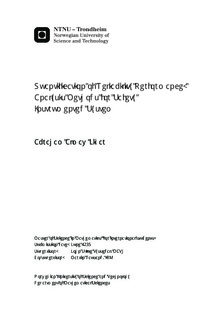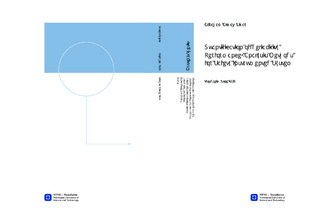| dc.description.abstract | The reliability performance of a safety instrumented system (SIS) can be determined by severalanalytical methods, such as simplified formulas, fault tree analysis and Markov analysis. Thesemethods are mentioned in annex B of IEC 61508-6, but this part is not normative and the usermay choose which method to use based on the specific operational characteristics of the SIS.Moreover, since it does not provide detailed explanations, proofs and generalized formulas forkoon architecture, it is difficult for the users to understand and use it as a guideline. The purposeof this report is to provide background and rationale for these and some other commonlyusedmethods, i.e., the PDS method and Rausand?s method, to compare them and suggest alternative methods to overcome some of their weaknesses, and to outline a procedure for their use.This report provides detailed proofs of the IEC 61508 simplified formulas, i.e., the reliabilityblock diagram approach, and extend them to general koon architectures. Due emphasis isgiven to critically evaluate the PDS method and several issues are discussed; for example, theconditional relationship of DU and DD failures. As far as these failures required to be quantifiedseparately, as the PDS method does, an alternative formula is developed that takes this relationshipinto account. Among the simplified methods the Rausand?s method is the least detailedand the PDS method is the most. Nevertheless, the analytical and numerical results show thatthese simplified methods are very similar except some slight differences resulted from the respectivelevels of details they consider.It is recognized that fault tree analysis (FTA) is always a good start during SIS reliability quantification,especially if the SIS is in the design phase. The report sets out a procedure and exploresthe proper formula in terms of correcting the optimistic approach used in the FTA. It isalso noted that a hybrid of FTA andMarkov analysis represents a SIS better since some flexibilityin the quantification can be taken care of byMarkov analysis.Beside the advantages that has already been explored inMarkov analysis, it is acknowledgedand exemplified in the report that the model is appropriate to calculate ?the average probabilitythat the SIS fails and the process demand occurs?, whilst the existing tradition is limited to calculating?the average probability that the SIS fails? without directly taking the process demandsinto account.All these and other existing methods in the area assume constant failure rate though it is,indeed, unrealistic. This report introduces a new approach to quantify SIS reliability performanceunder the assumption of other lifetime distributions and is demonstrated thoroughlywith Weibull distribution. The approach is verified both analytically and numerically for accuracy.Furthermore, the report establishes a simple procedure that may help users to choose themost adequate method, among the methods covered in this report, based on the specific operationalcharacteristics of the SIS. This is further demonstrated in a case study.Finally, the limitations of the present work are noted and suggestions for some areas of furtherresearches are given. | nb_NO |

